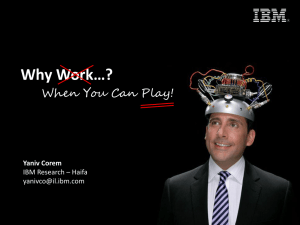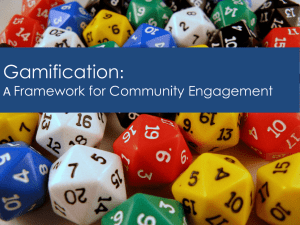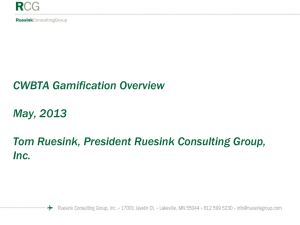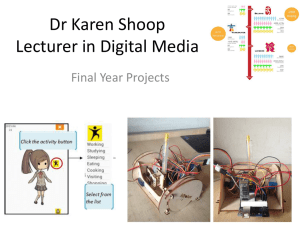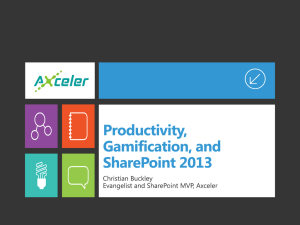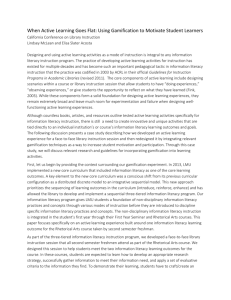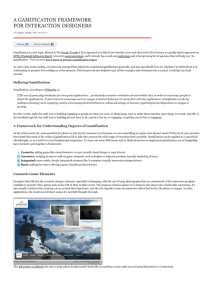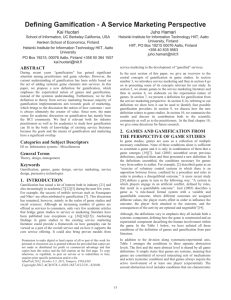Gamification
advertisement
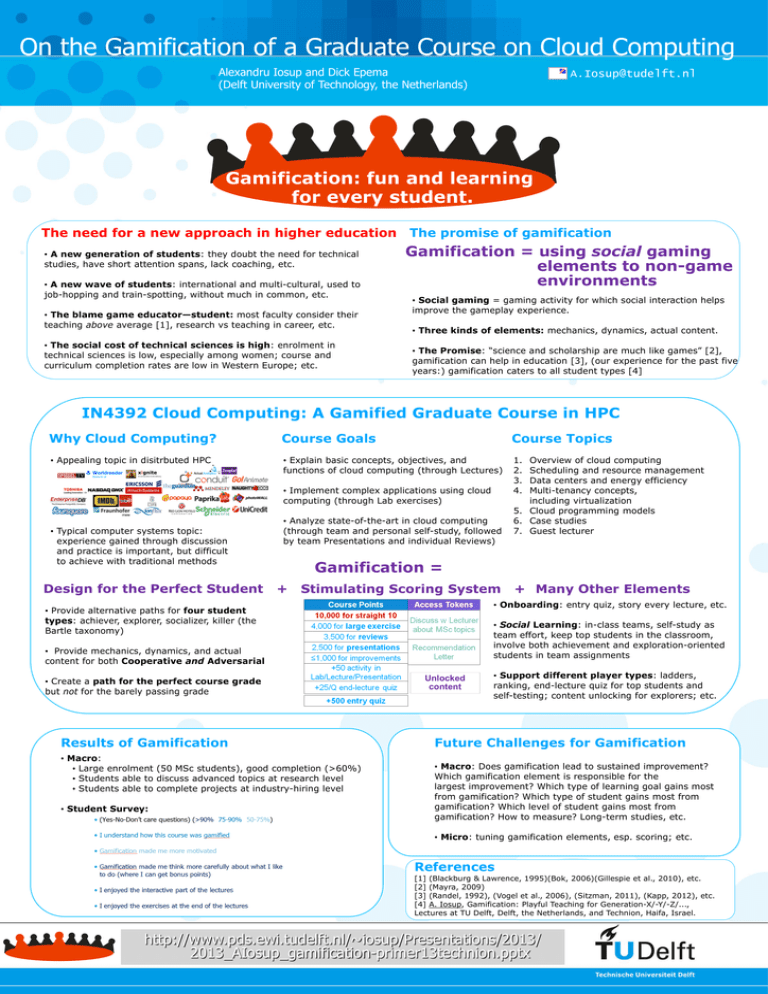
On the Gamification of a Graduate Course on Cloud Computing Alexandru Iosup and Dick Epema (Delft University of Technology, the Netherlands) A.Iosup@tudelft.nl Gamification: fun and learning for every student. The need for a new approach in higher education The promise of gamification • A new generation of students: they doubt the need for technical studies, have short attention spans, lack coaching, etc. • A new wave of students: international and multi-cultural, used to job-hopping and train-spotting, without much in common, etc. • The blame game educator—student: most faculty consider their teaching above average [1], research vs teaching in career, etc. • The social cost of technical sciences is high: enrolment in technical sciences is low, especially among women; course and curriculum completion rates are low in Western Europe; etc. Gamification = using social gaming elements to non-game environments • Social gaming = gaming activity for which social interaction helps improve the gameplay experience. • Three kinds of elements: mechanics, dynamics, actual content. • The Promise: “science and scholarship are much like games” [2], gamification can help in education [3], (our experience for the past five years:) gamification caters to all student types [4] IN4392 Cloud Computing: A Gamified Graduate Course in HPC Why Cloud Computing? Course Goals Course Topics • Appealing topic in disitrbuted HPC • Explain basic concepts, objectives, and functions of cloud computing (through Lectures) 1. 2. 3. 4. • Implement complex applications using cloud computing (through Lab exercises) • Typical computer systems topic: experience gained through discussion and practice is important, but difficult to achieve with traditional methods Design for the Perfect Student • Analyze state-of-the-art in cloud computing (through team and personal self-study, followed by team Presentations and individual Reviews) Gamification = + Stimulating Scoring System • Social Learning: in-class teams, self-study as team effort, keep top students in the classroom, involve both achievement and exploration-oriented students in team assignments • Provide mechanics, dynamics, and actual content for both Cooperative and Adversarial • Create a path for the perfect course grade but not for the barely passing grade Results of Gamification • Macro: • Large enrolment (50 MSc students), good completion (>60%) • Students able to discuss advanced topics at research level • Students able to complete projects at industry-hiring level + Many Other Elements • Onboarding: entry quiz, story every lecture, etc. • Provide alternative paths for four student types: achiever, explorer, socializer, killer (the Bartle taxonomy) • Student Survey: Overview of cloud computing Scheduling and resource management Data centers and energy efficiency Multi-tenancy concepts, including virtualization 5. Cloud programming models 6. Case studies 7. Guest lecturer Unlocked content • Support different player types: ladders, ranking, end-lecture quiz for top students and self-testing; content unlocking for explorers; etc. Future Challenges for Gamification • Macro: Does gamification lead to sustained improvement? Which gamification element is responsible for the largest improvement? Which type of learning goal gains most from gamification? Which type of student gains most from gamification? Which level of student gains most from gamification? How to measure? Long-term studies, etc. • Micro: tuning gamification elements, esp. scoring; etc. References [1] (Blackburg & Lawrence, 1995)(Bok, 2006)(Gillespie et al., 2010), etc. [2] (Mayra, 2009) [3] (Randel, 1992), (Vogel et al., 2006), (Sitzman, 2011), (Kapp, 2012), etc. [4] A. Iosup, Gamification: Playful Teaching for Generation-X/-Y/-Z/..., Lectures at TU Delft, Delft, the Netherlands, and Technion, Haifa, Israel. http://www.pds.ewi.tudelft.nl/~iosup/Presentations/2013/ 2013_AIosup_gamification-primer13technion.pptx
